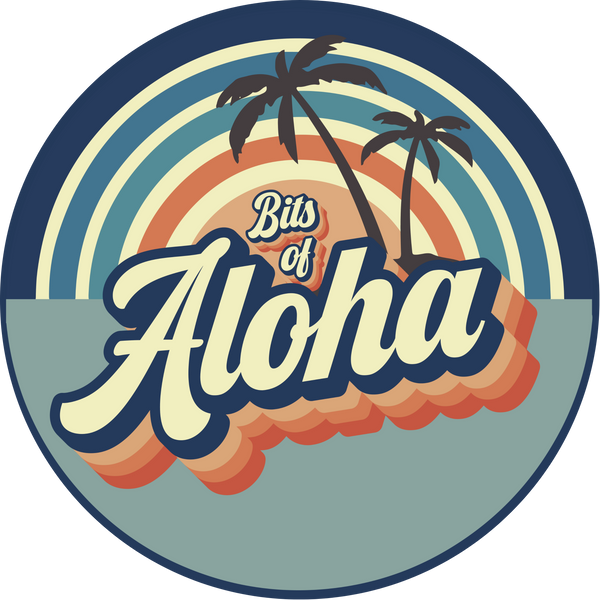
The Evolution of Aloha Prints: From Tradition to Global Fashion
Share
Origins of Aloha Prints
Aloha prints, the bold and colorful patterns synonymous with Hawaiian shirts and dresses, have a rich history rooted in multiple cultural influences. These distinctive designs evolved from a blend of Hawaiian, Japanese, Chinese, and Western artistic traditions, making them a true reflection of Hawaii’s diverse heritage.
The origins of aloha prints can be traced back to two primary sources: Hawaiian quilting patterns and Japanese kimono prints. The fusion of these styles, along with adaptations over time, helped create the signature look of modern aloha wear.
Influence of Hawaiian Quilts
Hawaiian quilting, which developed in the early 19th century, played a significant role in shaping traditional Hawaiian fabric design. Unlike European patchwork quilts, Hawaiian quilts are made from large, single pieces of fabric featuring bold appliqué designs inspired by native flora and natural elements. Common motifs include breadfruit, taro leaves, hibiscus flowers, and ferns—symbols of life and abundance in Hawaiian culture.
These quilting patterns reflected Hawaiian artistry and storytelling, preserving legends, historical events, and family heritage in fabric form. As textiles became more widely available, these quilt-like patterns found their way into printed fabrics, influencing the early designs of what would become aloha prints.
Japanese Kimono Prints and the Birth of Aloha Shirts
In the late 19th and early 20th centuries, waves of Japanese immigrants arrived in Hawaii to work on sugarcane and pineapple plantations. With them, they brought their textile traditions, particularly the intricate prints found on cotton yukata and silk kimono. These fabrics featured repeating patterns of cherry blossoms, cranes, waves, and geometric shapes—elements that later merged with Hawaiian themes.
During the 1920s and 1930s, local tailors in Honolulu began using Japanese kimono fabric to create Western-style shirts. Early adopters of this style were young Hawaiian men and university students who sought a more relaxed, stylish alternative to traditional business attire. One of the most well-known tailors of this era was Musa-Shiya Shoten, a shop in Honolulu that advertised "aloha shirts" made from kimono fabric.
Ellery Chun, a Chinese-Hawaiian businessman, played a crucial role in the commercial success of these shirts. In 1936, he trademarked the term "aloha shirt" and began producing them in larger quantities using bright, tropical-themed prints. This marked the beginning of the mass production of aloha prints, shifting from strictly Japanese-inspired motifs to designs that incorporated native Hawaiian flora, ocean waves, and island wildlife.
The Evolution of Aloha Prints
As the demand for aloha wear grew, local manufacturers, including Kamehameha Garment Company and Shaheen’s of Honolulu, started developing unique fabric designs that moved away from strictly Japanese influences. Textile artists began incorporating elements of traditional Hawaiian quilt patterns, Polynesian tapa cloth designs, and oceanic motifs to create a distinct island aesthetic.
Alfred Shaheen, a pioneer in Hawaiian textile design, revolutionized the industry in the 1950s by developing his own silk-screen printing methods. This allowed for more intricate and exclusive designs, elevating the quality of aloha prints. Shaheen’s prints featured a mix of floral, tropical, and tribal-inspired patterns, often hand-drawn and meticulously detailed. His innovations helped make aloha wear more fashionable, moving beyond casual resort clothing into sophisticated evening and business attire.
Aloha Prints and Post-War Popularity
After World War II, Hawaii became a popular travel destination, and returning soldiers brought aloha shirts home as souvenirs. Hollywood played a significant role in spreading the appeal of aloha prints, with actors like Elvis Presley, Frank Sinatra, and Montgomery Clift donning Hawaiian shirts in films and public appearances. The cover of Elvis’s 1961 album "Blue Hawaii" famously featured him wearing an aloha-print shirt, further solidifying the trend.
By the 1960s, aloha prints had become a mainstream fashion statement, not only in Hawaii but across the mainland U.S. The increasing adoption of "Aloha Friday" in Hawaiian workplaces—a tradition that encouraged casual dress—helped solidify aloha prints as acceptable business attire. This movement later inspired "Casual Friday" in the continental U.S., making Hawaiian prints a symbol of relaxed yet stylish dress.
Modern Innovations in Aloha Prints
As aloha prints gained global recognition, designers began experimenting with new styles. In the 1980s and 1990s, companies like Reyn Spooner introduced the "reverse-print" style, where the fabric’s design was printed on the inside to create a more subdued, sophisticated look. This innovation allowed aloha shirts to transition into professional and formal settings.
Today, aloha prints continue to evolve, with designers blending traditional motifs with modern aesthetics. High-end fashion brands such as Gucci and Prada have incorporated Hawaiian-inspired prints into their collections, demonstrating the enduring appeal of these vibrant patterns. Additionally, contemporary Hawaiian designers are revisiting their roots, creating sustainable and culturally conscious aloha wear that honors the heritage of the original prints.
Conclusion
The history of aloha prints is a testament to Hawaii’s multicultural influence and artistic evolution. From the bold appliqué patterns of Hawaiian quilts to the delicate motifs of Japanese kimono fabrics, these prints have grown into a defining element of Hawaiian identity and global fashion. Whether worn casually on the beach, in corporate boardrooms on Aloha Fridays, or on the runways of high fashion, aloha prints remain a vibrant and cherished symbol of island life.
